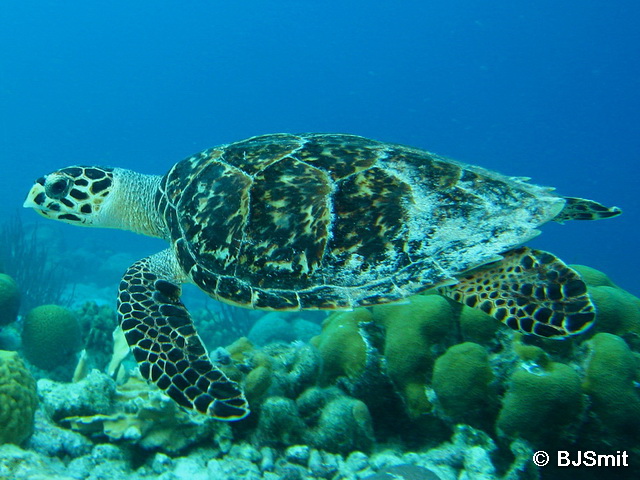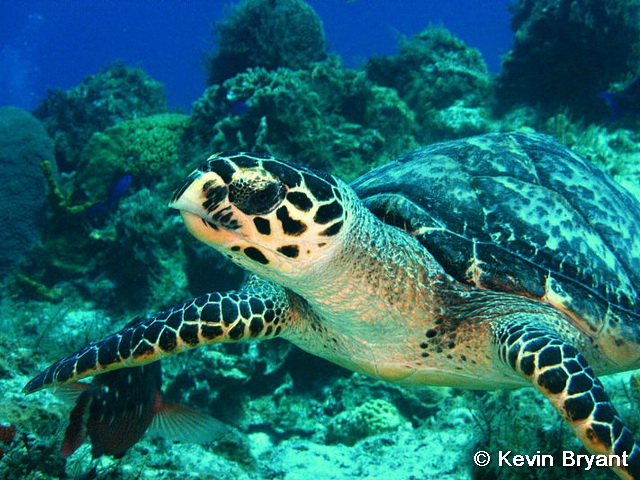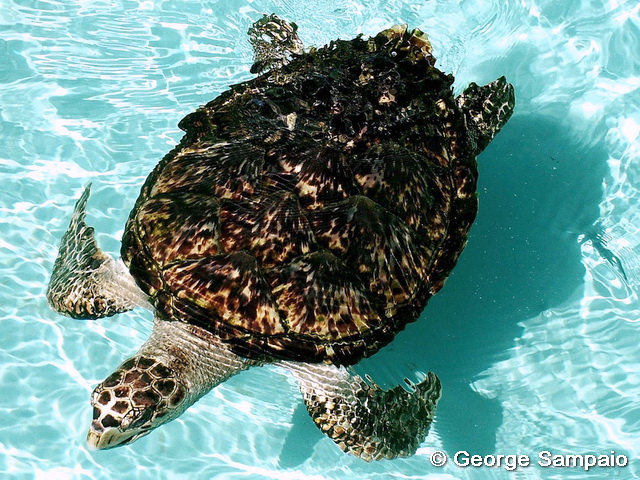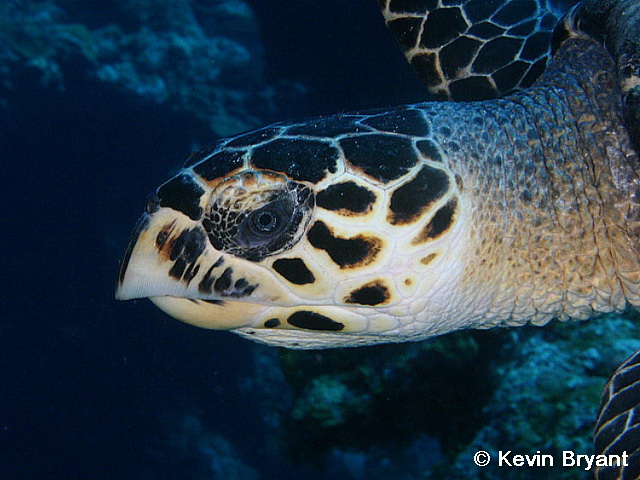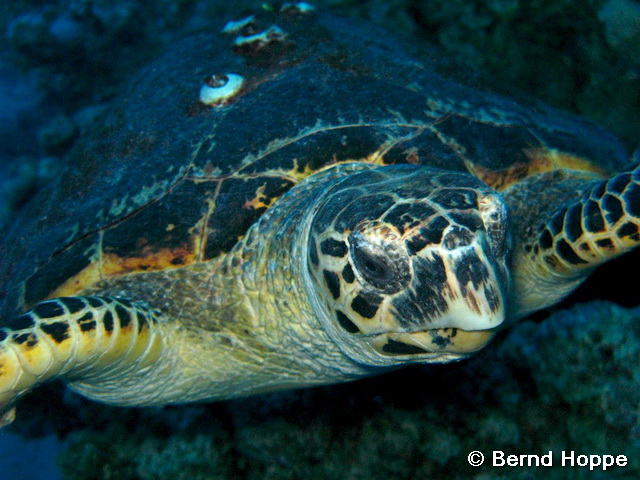Eretmochelys imbricata (Linnaeus, 1766)
Hawksbill Turtle 玳瑁
Carapace elliptical, with characteristic imbricated dorsal scutes, which its Latin name E. imbricata derived from.
Scutes are most strongly imbricated at maturity but this character will lose in older individuals.
Each back and fore flippers has two claws on the anterior border.
Carapace with amber ground colour, with black or mottled brown colour.
Head narrow with a strongly hooked jaw.
Post-hatchling, small juvenile and migrating animals are found in pelagic waters.
Larger juveniles and adult forage in benthic habitat including coral reef and other hard bottom habitats, sea grass, algal beds, mudflats and mangrove bay.
Adults nest on sandy beach, primarily under vegetation.
Clutch size around 140 eggs.
In Hong Kong, only known from one record of a stranded dead individual found on a beach near WWF Island House Centre in Tai Po in April 2004.
However, it is known from the provincial waters of Guangxi, Hainan, Guangdong, Fujian, Zhejiang, Jiangsu and Shangdong. It may occurs in Hong Kong waters on occasion.
This species has a circumglobal distribution in tropical to subtropical waters. Found in waters of 108 countries, with nesting occuring in 70 countries.
In 19th - 20th centuries, this species suffered drastic decline in population due to intense exploitation on turtle eggs, turtle for food and tortoiseshell. Todays this species is still threatened by these exploitation, and also loss of nesting sites and coral reef foraging ground, fishery bycatch, and marine pollution.
IUCN Redlist: CR (Critically Endangered)
China Redlist: Critically Endangered
